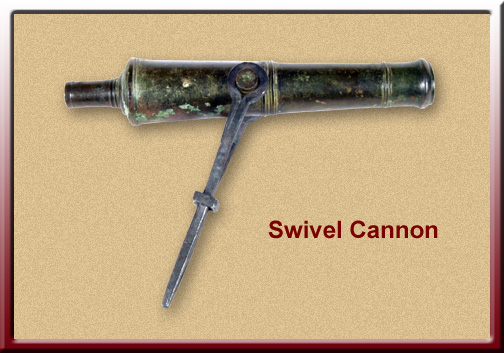Michael Carrick is widely known as a collector of rare firearms. He has written articles for Gun Digest Reloader’s Manual, The Gun Report Magazine, Muzzle Blasts Magazine, and other specialized publications relating to antique firearms collecting. His large collection contains examples of all the weapons—he prefers to call them “tools of survival”—carried by Lewis and Clark and the Corps of Discovery.
Formerly he was the owner of Lightning Powder Company of Salem, Oregon, manufacturers and distributors of equipment for crime scene investigators. He still serves as a consultant, lecturer and instructor for the firm, with his responsibilities continuing to take him to all quarters of the globe. He is a life member and a Distinguished Fellow of the International Association for Identification, an organization of police scientific investigators founded in 1916, and has published several technical articles in their journal.
Michael Carrick is a diligent historian and a member of the Historical Society of Marion County, Oregon, and the Mission Mill Historical Association of Salem. He is a member of the Lewis and Clark Trail Heritage Foundation, Inc., and a past president of the Oregon chapter of the foundation. He has published several articles on historical stereo-photography in Stereo World.
While pursuing his wide range of interests with equal passion, he has also left his mark in community service, not only locally but also in other countries. He has traveled with the Northwest Medical Team to Romania to work in orphanages, to Mexico City to work with children living in the city dump, and three times to Honduras to help develop potable water systems for poor communities.
Contributions


From the seventeenth century on, French fur traders and later the British supplied their Indian clients with smoothbore muskets both as gifts and in trade for pelts. Universally called by their French name “fusils,” they were lighter and more slender than contemporary military muskets.


Three large pieces, two blunderbusses and a small cannon, were mounted to the three largest boats using a brass or iron swivel. These guns were used to celebrate arrivals and as a warning to those considering attacking the expedition.
Swords
by Michael Carrick

Army regulations regarding swords were widely ignored and it is probably impossible to know exactly which type of sword Lewis or Clark would have carried.
Muskets and Rifles
by Michael Carrick

Lewis originally had only fifteen rifles specially prepared for the expedition at Harpers Ferry armory in Virginia in 1803. Therefore, these additional enlisted men were expected to bring with them their standard-issue arms.
The Pistols
by Michael Carrick

Records show Lewis has two types of pistols along: horse pistols and pocket pistols. Early on the morning of July 27, 1806, while camped on the Two Medicine River, Lewis “ran at him with my pistol and bid him lay down my gun.”
Experience the Lewis and Clark Trail
The Lewis and Clark Trail Experience—our sister site at lewisandclark.travel—connects the world to people and places on the Lewis and Clark Trail.
Discover More
- The Lewis and Clark Expedition: Day by Day by Gary E. Moulton (University of Nebraska Press, 2018). The story in prose, 14 May 1804–23 September 1806.
- The Lewis and Clark Journals: An American Epic of Discovery (abridged) by Gary E. Moulton (University of Nebraska Press, 2003). Selected journal excerpts, 14 May 1804–23 September 1806.
- The Lewis and Clark Journals. by Gary E. Moulton (University of Nebraska Press, 1983–2001). The complete story in 13 volumes.


